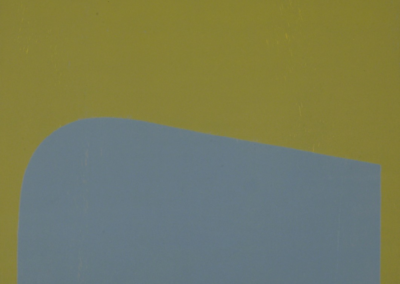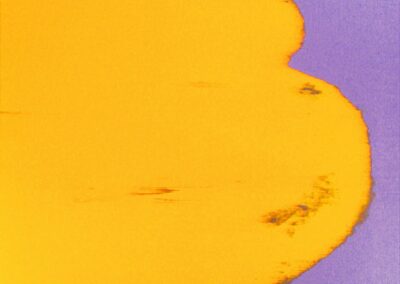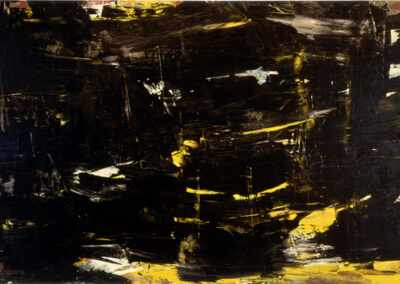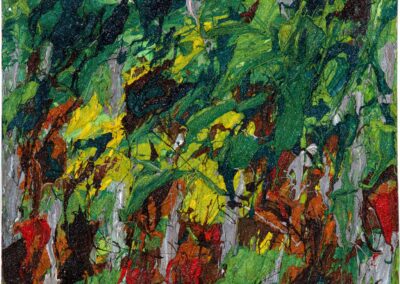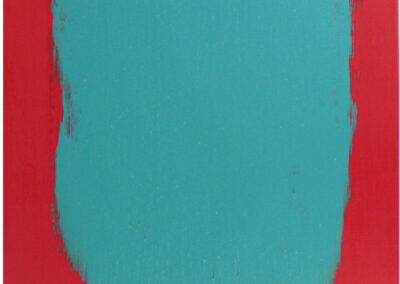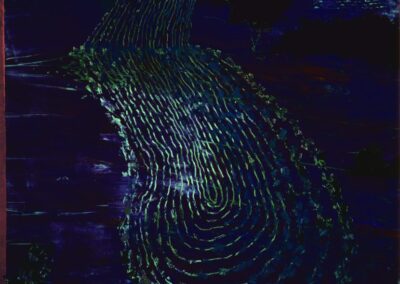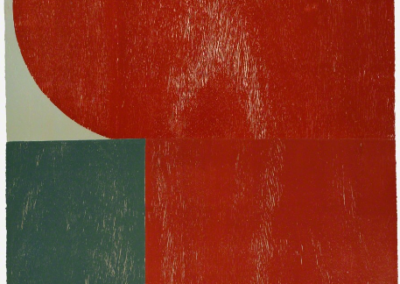Our next Artist You Need To Know is a good example of the motivation behind this series, from AIH Studios: Richard Gorman (1935 – 2010) was a painter, print maker and sculptor whose work is significant but doesn’t necessarily get the contemporary attention he merits. Gorman passed in 2010, leaving behind a body of work that challenges the process of abstraction, but also a series of prints that allude to his influences (whether the tradition of landscape that informs many Canadian artists, or literary influences from Irving Layton to John Metcalf). He was quoted in the Montreal Star, on the occasion of a retrospective of his work, declaring that “There’s no real point to what I’m doing except to create something beautiful.” Gorman grew up in Ottawa, and the National Gallery of Canada (which owns many of his works) was his first ‘educational’ space, whether through exposure to their collection, or later with classes he took at the gallery.
-
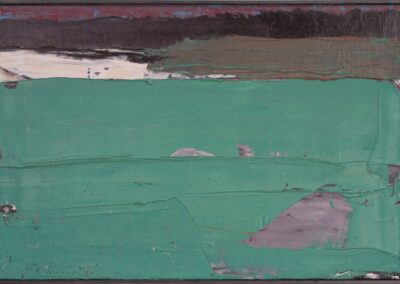
Winter Night, 1993
-

V Beta Series, Passing Threat I, 2006
-

Acid Drop, 2003
-

Moon Rise, 2005
-

21st Century Gothic, 1979
-

Untitled, 1982
While attending OCAD University (when it was still OCA), Gorman found early success with the Avrom Isaacs Group of artists (beginning in 1959). His style was much more of a maverick, however, than other painters in that set, often more interested in ‘spiritual meaning’ than commercial prestige.
Initially, Gorman’s abstracted works were directly evocative of landscape and place, but the influence of painter Jock McDonald – both as a teacher, and in later encounters with McDonald’s paintings – helped push Gorman’s practice into less ‘realistic’ and more intuitive areas. However, just as he worked in watercolour as well as oil, while always producing figure drawings, Gorman oscillated between these distinctive styles, allowing them to meld into each other: In the late 1980s, he established a permanent base in Toronto, while focusing more exclusively on abstraction. A year later the The Robert McLaughlin Gallery in Oshawa produced a retrospective of Gorman’s work reaching back three decades.
His solo exhibitions are many, including The Isaacs Gallery (1959-60, 1962, 1964) and The Blue Barn Gallery (1965). In 1964, Gorman was jointly exhibited at the Musée des beaux-arts de Montréal Arguably the most important was “Richard Gorman” at the AGO – Art Gallery of Ontario in 2004. But other solo shows that merit mentioning are: “Three Canadians” at the Art Gallery of Toronto (1961); First Biennial Winnipeg Show (1962); National Gallery of Canada Biennial Exhibition of Graphic (1964); Trinity College, University of Toronto (1965), Dennis Reid’s “Toronto Painting 1953-1965” (organized for the National Gallery in 1972); and the National Gallery’s “Crisis of Abstraction: the 1950s”, organized by Denise Leclerc in 1993. He is represented in the collections of the National Gallery of Canada, The Art Gallery of Ontario, Queen’s University, La politique étrangère du Canada – Affaires mondiales Canada, Victoria and Albert Museum, London, England, Agnes Etherington Art Centre, Kingston and the Shanghai Art Museum, China.
-

Richard Gorman, Love Seat, from a series of six etchings, 1992.
-

Georgian Bay, from a series of six etchings, 1992.
The above prints by Gorman were commissioned by John Metcalf, with the intent ‘to create images that were in the spirit of Irving Layton’s poems, but not literal illustrations’ for an edition of Irving Layton’s Dance With Desire. This was a collection of Layton’s love poems.
Gorman was elected a member of the Royal Canadian Academy of the Arts / L’Académie Royale des Arts du Canada in 1976.


